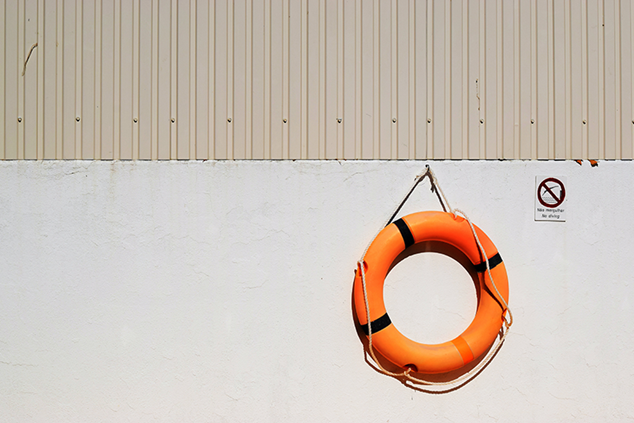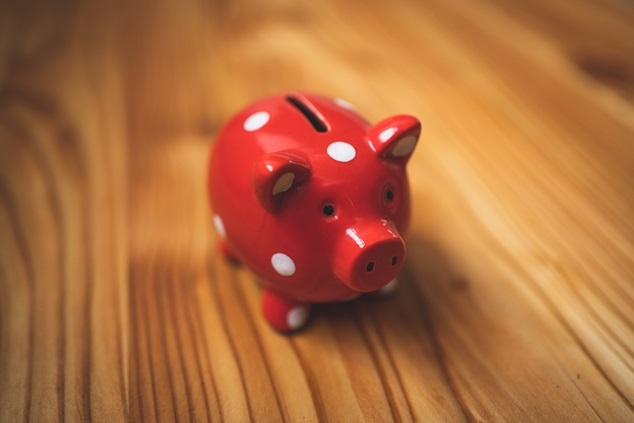Best short-term investments you should consider
Learn how short-term investments can help you reach your financial goals. Find the right balance between money protection and earning modest returns.
Short-term investments can be converted to cash in less than three years with options that are safe, liquid, and earn a moderate yield.
Short-term investment vehicles: High-yield savings accounts, certificates of deposit (CDs), Treasury securities, money market accounts, and short-term bond funds are all different short-term investment options.
Choosing the best short-term investment: Matching investment type to purpose, weighing yield vs. risk, laddering and diversifying short-term options, and avoiding mistakes is crucial to finding the best investment option for you.
What makes a good short-term investment?
If you have a goal in the near future you want to save for, you might want to consider investing short-term. A good short-term investment has to be a safe and easily accessible place for your money, but at the same time have some interest-earning potential. So how exactly can a short-term investment be defined?
Short-term investments are typically those you make for under three years without penalty or risk of loss. Such an investment has to have the right balance between risk and return. So, the best short-term investment is one that helps you reach your goals with the highest yield and the lowest risk possible.
Depending on your goals and investing timeframe, you have to weigh four key factors:
Liquidity: How easily can the investment be converted into cash?
Risk: What is your risk tolerance, and how important is principal protection for short time horizons?
Yield: What interest rates, dividends, or appreciation potential does the investment earn?
Access: How quickly can you withdraw funds without penalty?
Common short-term investment vehicles
There are a variety of options for short-term investing, including:
High-yield savings accounts
Certificates of deposit (CDs)
Treasury securities
Money market accounts
Short-term bond funds
High-yield savings accounts
Banks or credit unions offer high-yield savings accounts that pay higher interest rates than traditional savings accounts. These accounts are typically offered by FDIC-insured banks or NCUA-insured credit unions, meaning funds in these accounts would be protected up to $250,000 per depositor, per institution, against institutional failure, making them a low-risk savings option.
The primary benefit of a high-yield savings account is instant liquidity and daily compounding interest. Generally, you can access your money at any time. However, it is important to note that some institutions may cap their monthly withdrawals and transfers (e.g., six per month), meaning you can face a penalty if you exceed the limit.
So, if you’re in need of emergency funds or want to achieve your short-term goals, a high-yield savings account is a good option to park your money for a short period but still maintain liquidity. Just note that withdrawals may be limited to a certain amount per month, although those offered through the Raisin platform are not subject to any limit.
Certificates of deposit (CDs)
A certificate of deposit (CD) is a time deposit with a fixed interest rate and maturity period. So, if you invest in a CD, you have to hold the money in the account for a specified period of time. In exchange, the bank will pay you a higher interest rate for having the security of having your money.
If you need access to your money before the end of the maturity period, early withdrawal penalties may apply. To avoid paying a penalty but still have the possibility to withdraw your money, you might consider no-penalty CDs, short-term CDs, or laddering strategies.
By laddering your short-term investments, you can maximize your return, since you probably won’t need all the money at one time. Simply spread your short-term savings out among different investment vehicles with different maturity periods and interest rates.
Treasury securities (bills & notes)
Treasury securities come as Treasury bills, bonds, and notes. As they are backed by the U.S. government, they typically offer a safe yield.
Maturity is the main distinguishing factor between the three types of Treasuries. While Treasury bills have the shortest maturities of one year or less, Treasury notes have maturities ranging from two to ten years, and Treasury bonds have maturities ranging from 20 to 30 years.
If you’re a risk-averse investor, Treasury bills or notes might be good short-term investment options with a safe yield, which is why Treasuries are often used by conservative investors.
Treasuries are available to purchase directly from the government or through a brokerage or financial institution.
Money market accounts
Money market accounts are a type of deposit account with a higher interest rate than traditional savings and may include check-writing privileges. However, they typically have minimum balance requirements.
If you need access to your money in the near future without any strings attached, a money market account might be a great option for you. Keep in mind that they may also be subject to withdrawal limits withdrawals per month.
Short-term bond funds
Short-term bond funds are loans to the government or businesses. They can offer higher yields than savings accounts, but are generally riskier and may fluctuate in value. Unlike savings accounts, CDs, or Treasuries, short-term bond funds can lose value if interest rates rise or issuers default. They may still be appropriate for investors comfortable with some volatility (and possible losses) in exchange for the potential of investment options with high returns.
Comparing short-term investment options
Yield | Liquidity | Risk Level | Time Commitment | Minimum Deposit | |
High-Yield Savings Accounts | High interest rates | Highly liquid, quick access to money, and you can add money to the account | Low risk | No maturity period | Generally, no minimum to open |
Certificates of Deposit (CDs) | Fixed interest rates | Low liquidity, early withdrawal penalty may apply | Low risk | Fixed maturity period, generally from 3 to 60 months | Depending on the bank or broker, there may be a minimum initial deposit |
Treasury Securities | Safe, but low yield | Highly liquid | Low risk | Bills up to one year; notes from 2 to 10 years | Minimum deposit required (actual value may vary) |
Money Market Accounts | Higher interest rates than traditional savings accounts | High liquidity | Generally low risk | No maturity period | May have a minimum balance requirement |
Short-Term Bond Funds | Higher yields than savings accounts | Highly liquid | High risk | Generally, maturity periods from 1 to 3½ years | May have a minimum balance requirement |
If you want to find the best short-term investment for you, Raisin offers access to multiple banks and credit unions for easy comparison and optimization.
How to choose the right short-term investment for your goals
If you have short-term goals, you probably want to save as much money as you can. Short-term investment options with high returns might come in handy, but before choosing a certain investment type, you may want to:
Match the investment type to your saving purpose
Weigh yield vs. risk
Ladder and diversify short-term options
Avoid certain mistakes with short-term investing
Match investment type to purpose
If you’re saving for a down payment, liquidity matters, since the money must be at the ready. So, it’s important to choose an investment that’s highly liquid, such as a high-yield savings account. That can save tens of thousands of dollars in interest payments over the maturity period of a loan.
Maybe you want to build an emergency fund that provides safety and offers instant access. As there might be situations when you need to pay for unexpected expenses, your emergency fund has to offer maximum liquidity and allow you to withdraw money at any time.
Paying cash for a vacation or a large purchase, instead of financing them, might be a smarter decision and potentially save you hundreds or thousands of dollars in interest. By investing in CDs or money market accounts, you can save the amount you need to pay cash.
Weighing yield vs. risk
The best short-term investments are those with high yields and a low risk. Unfortunately, the reality looks a bit different. According to the risk-return tradeoff, invested money can yield higher profits if the investor accepts a higher risk. As a rough guide, with low risk comes potentially low returns, and with a high risk there might be a higher return.
So, when you choose a short-term investment, it has to fit your risk tolerance and should be able to meet your financial goals.
Laddering and diversifying short-term options
By spreading funds across staggered maturity dates, you can reduce your risk of locking in a low yield. For better average returns and flexibility, it might make sense to combine savings products.
A laddering strategy might have you splitting a lump sum evenly across long-term CDs of varying lengths. This allows you to always have funds approaching maturity and, thus, liquidity to either reinvest or use for its intended purpose.
A diversifying strategy might, for example, include a portion of money market accounts for maximum liquidity, another portion of bond funds for funding a purchase in the next one to two years, and a portion of long-term CDs for a big purchase or a down payment in more than three years.
Mistakes to avoid with short-term investing
For getting the best results possible with short-term investments, you not only need an investment strategy, but may also want to avoid a few potential mistakes:
Chasing yield at the expense of safety: Your focus should lie on safety rather than on yield, since you’re investing for the short term. That’s important, because your money should be there when you need it. Getting a little extra return while short-term investing is not worth the risk.
Locking funds away for too long: Your investment should fit your needs, as it can be crucial to have access to your money in certain situations. Locking funds away for too long can do more harm than good.
Overlooking fees or early withdrawal penalties: In case of an emergency or unexpected expenses, it’s important to have access to your money. Therefore, before choosing an investment, you should be aware of any early withdrawal penalties, which could minimize your returns.
- Not shopping rates across providers: Not all short-term investments are equal, nor are the products offered by different providers. To find the best short-term investment for you, it’s important to compare the offers of different providers.
Build a smarter savings strategy today
Investing short-term makes it possible to reach financial goals in a shorter timeline. To do so, you need to find the right balance between money protection and earning modest returns.
Raisin offers high-yield savings accounts, money market accounts, and CDs that can help fit your needs. Compare the top rates on the Raisin marketplace and get started today!
FAQ
How much can you earn from short-term investments?
Generally, short-term investments have a lower risk. That’s why you probably won’t be able to earn as much as you would in a long-term investment. Also, how much you earn from short-term investments depends on your initial deposit, investment product, and interest rate.
Are short-term investments safe during inflation?
Short-term investments such as high-yield savings accounts or treasury securities may be safe, but in times of rising inflation, their returns are often insufficient to offset the loss of purchasing power. They are therefore only suitable as inflation protection to a limited extent. Long-term investments such as stocks, ETFs, or real estate can be a better way to counter inflation in the long term if they are broadly diversified.
What is the minimum amount to start short-term investing?
There is no minimum amount to start short-term investing. How much you’ll need for an initial deposit depends on your financial goals and the provider or strategy you choose. But note that with many investment types, you might also want to consider fees and other costs associated with the provider you work with.
Can you lose money with short-term investments?
Short-term investments, including high-yield savings accounts, certificates of deposit (CDs), treasury bills, and money market funds, are considered safe. However, a safe investment doesn’t guarantee that you won’t lose money.
The above article is intended to provide generalized financial information designed to educate a broad segment of the public; it does not give personalized tax, investment, legal, or other business and professional advice. Before taking any action, you should always seek the assistance of a professional who knows your particular situation for advice on taxes, your investments, the law, or any other business and professional matters that affect you and/or your business.


